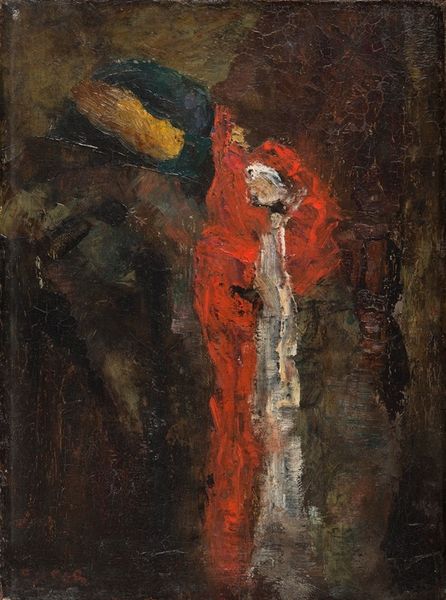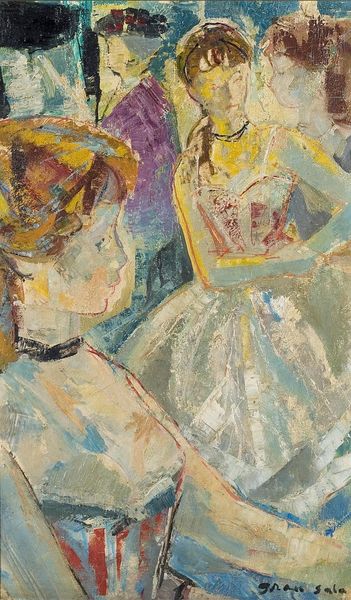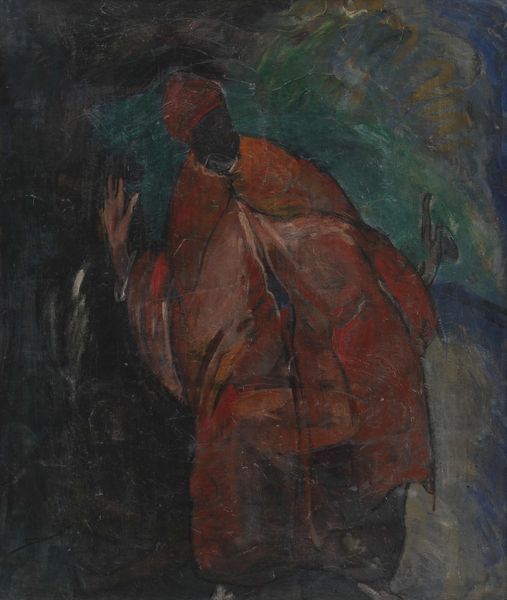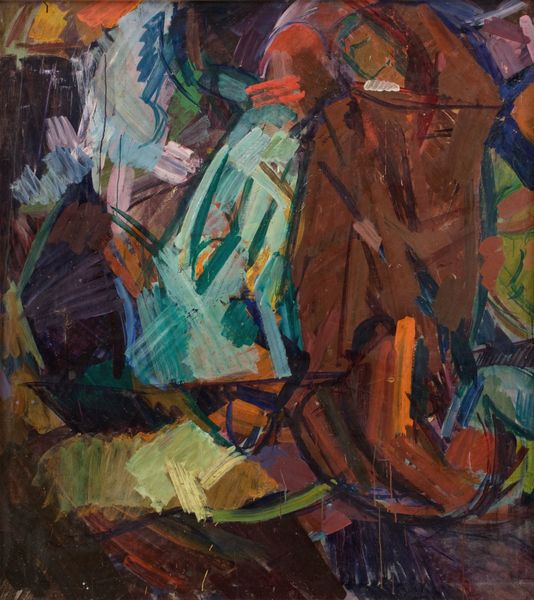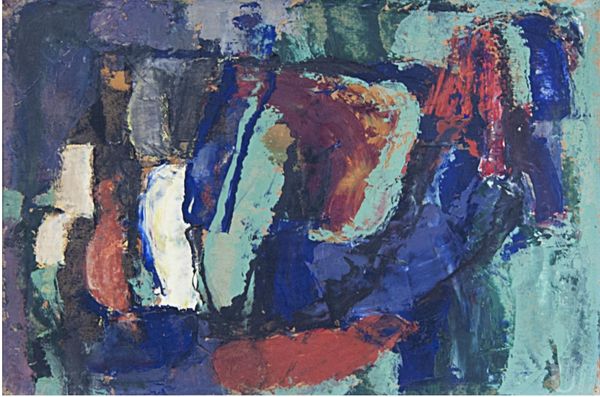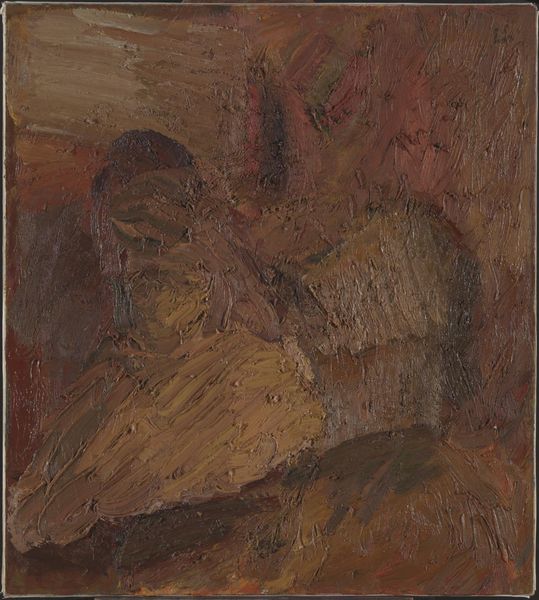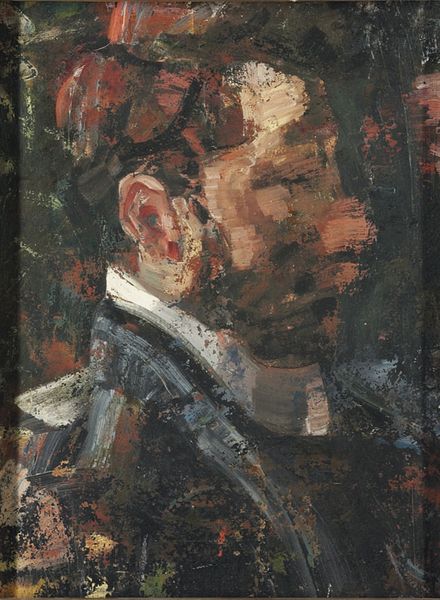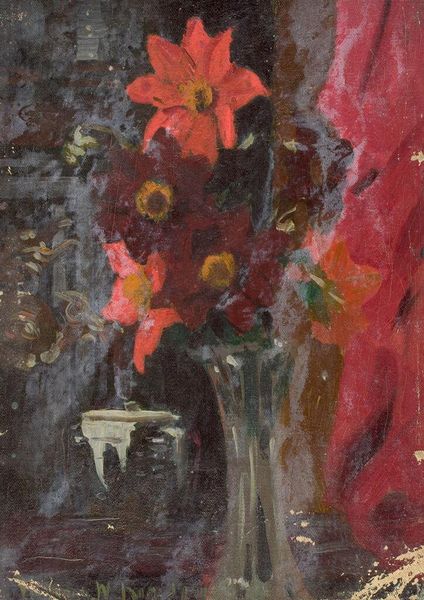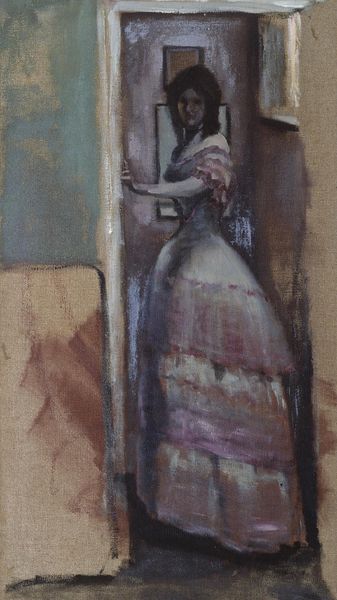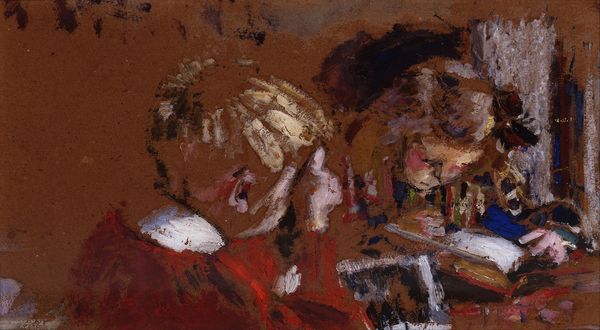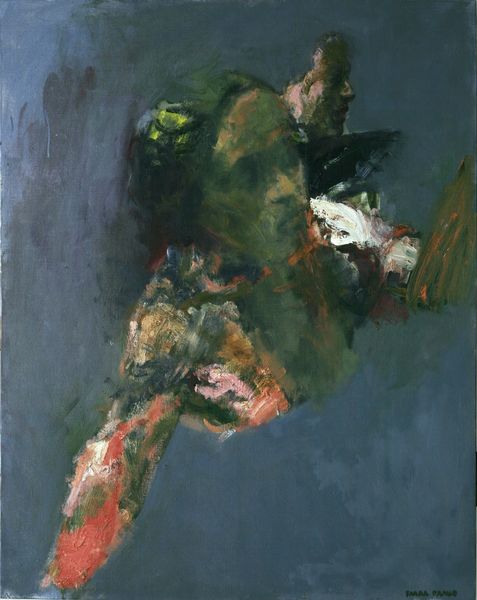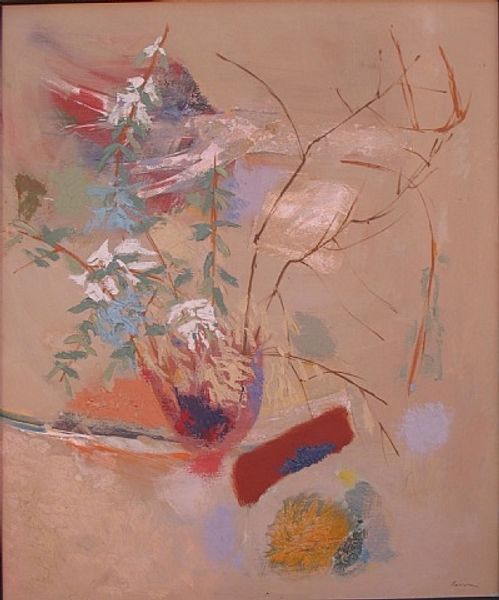
Copyright: Public domain
Isaac Israels painted "Two Young Women in the Snow," a tender, fleeting observation of youthful companionship. The red and black headdresses, bright against the muted landscape, draw immediate attention, echoing the veils and head coverings seen across cultures, symbolizing identity and status. Consider the enduring motif of paired figures, found in classical friezes and Renaissance paintings alike. Here, the young women huddle together against the cold, a gesture of shared warmth and mutual support. This act of embracing, a universal symbol of comfort, reminds us of similar motifs of closeness depicted in art throughout history—from medieval depictions of the Virgin Mary and Child to the intimate scenes of the Impressionists. The shared gesture between these women speaks to a deep, subconscious need for connection. These images resonate across time, reflecting the cyclical nature of human experience.
Comments
rijksmuseum about 2 years ago
⋮
An everday scene in Amsterdam in the winter: two warmly dressed factory workers or studio models. Israels painted them as if, during their break, they had briefly, hesitatingly, stopped before him. However, appearances can be deceptive. The pose of both women is carefully considered, and the black and red passages of their shawls and coats are contrasted to create a well-balanced composition, despite looking like the record of a fleeting moment.
Join the conversation
Join millions of artists and users on Artera today and experience the ultimate creative platform.
